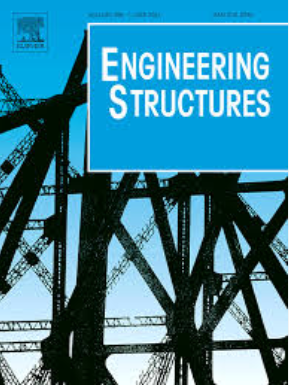Machine learning-based framework for rapid assessment of seismic resilience and sustainability metrics for regional RC bridges
IF 6.4
1区 工程技术
Q1 ENGINEERING, CIVIL
引用次数: 0
Abstract
The seismic resilience and environmental impact of reinforced concrete (RC) bridges during earthquakes are crucial for maintaining the functionality and sustainability of transportation networks in earthquake-prone regions. This study presents a machine learning (ML)-based framework that integrates performance-based earthquake engineering (PBEE) principles and ML models to rapidly assess seismic resilience and post-earthquake losses, including repair time, repair costs, and sustainability metrics quantified by carbon footprint, for regional RC bridges. Based on twelve bridge key attributes, including column height and diameter, 1000 finite element (FE) bridge models are systematically developed through the Latin Hypercube Sampling (LHS) method and subjected to 100 ground motions to compute probabilistic seismic demand models, system-level fragility, seismic resilience, and post-earthquake losses. Through hyperparameter tuning and k-fold cross-validation, six ML models are optimized with the artificial neural network (ANN) achieving superior accuracy in predicting seismic resilience. Subsequently, the developed ANN framework is applied to representative regional RC bridges, facilitating rapid and reliable predictions of seismic resilience and post-earthquake losses across varying bridge attributes. Overall, the developed framework serves as an efficient and practical tool for decision-makers, providing valuable insights to enhance seismic resilience and sustainability metrics while optimizing post-earthquake recovery strategies for critical infrastructure.
基于机器学习的区域RC桥梁地震恢复力和可持续性指标快速评估框架
地震中钢筋混凝土(RC)桥梁的抗震弹性和环境影响对于维持地震多发地区交通网络的功能和可持续性至关重要。本研究提出了一个基于机器学习(ML)的框架,该框架集成了基于性能的地震工程(PBEE)原则和ML模型,以快速评估区域RC桥梁的地震恢复力和地震后损失,包括修复时间、修复成本和碳足迹量化的可持续性指标。基于12个桥梁关键属性,包括柱高和直径,通过拉丁超立方体采样(LHS)方法系统地开发了1000个有限元(FE)桥梁模型,并进行了100次地面运动,以计算概率地震需求模型、系统级脆弱性、地震恢复力和地震后损失。通过超参数调整和k-fold交叉验证,利用人工神经网络(ANN)对6个ML模型进行了优化,在预测地震恢复力方面取得了较高的精度。随后,将开发的人工神经网络框架应用于具有代表性的区域RC桥梁,促进快速可靠地预测不同桥梁属性的地震恢复力和震后损失。总体而言,开发的框架为决策者提供了高效实用的工具,为增强地震恢复力和可持续性指标提供了宝贵的见解,同时优化了关键基础设施的灾后恢复战略。
本文章由计算机程序翻译,如有差异,请以英文原文为准。
求助全文
约1分钟内获得全文
求助全文
来源期刊

Engineering Structures
工程技术-工程:土木
CiteScore
10.20
自引率
14.50%
发文量
1385
审稿时长
67 days
期刊介绍:
Engineering Structures provides a forum for a broad blend of scientific and technical papers to reflect the evolving needs of the structural engineering and structural mechanics communities. Particularly welcome are contributions dealing with applications of structural engineering and mechanics principles in all areas of technology. The journal aspires to a broad and integrated coverage of the effects of dynamic loadings and of the modelling techniques whereby the structural response to these loadings may be computed.
The scope of Engineering Structures encompasses, but is not restricted to, the following areas: infrastructure engineering; earthquake engineering; structure-fluid-soil interaction; wind engineering; fire engineering; blast engineering; structural reliability/stability; life assessment/integrity; structural health monitoring; multi-hazard engineering; structural dynamics; optimization; expert systems; experimental modelling; performance-based design; multiscale analysis; value engineering.
Topics of interest include: tall buildings; innovative structures; environmentally responsive structures; bridges; stadiums; commercial and public buildings; transmission towers; television and telecommunication masts; foldable structures; cooling towers; plates and shells; suspension structures; protective structures; smart structures; nuclear reactors; dams; pressure vessels; pipelines; tunnels.
Engineering Structures also publishes review articles, short communications and discussions, book reviews, and a diary on international events related to any aspect of structural engineering.
 求助内容:
求助内容: 应助结果提醒方式:
应助结果提醒方式:


